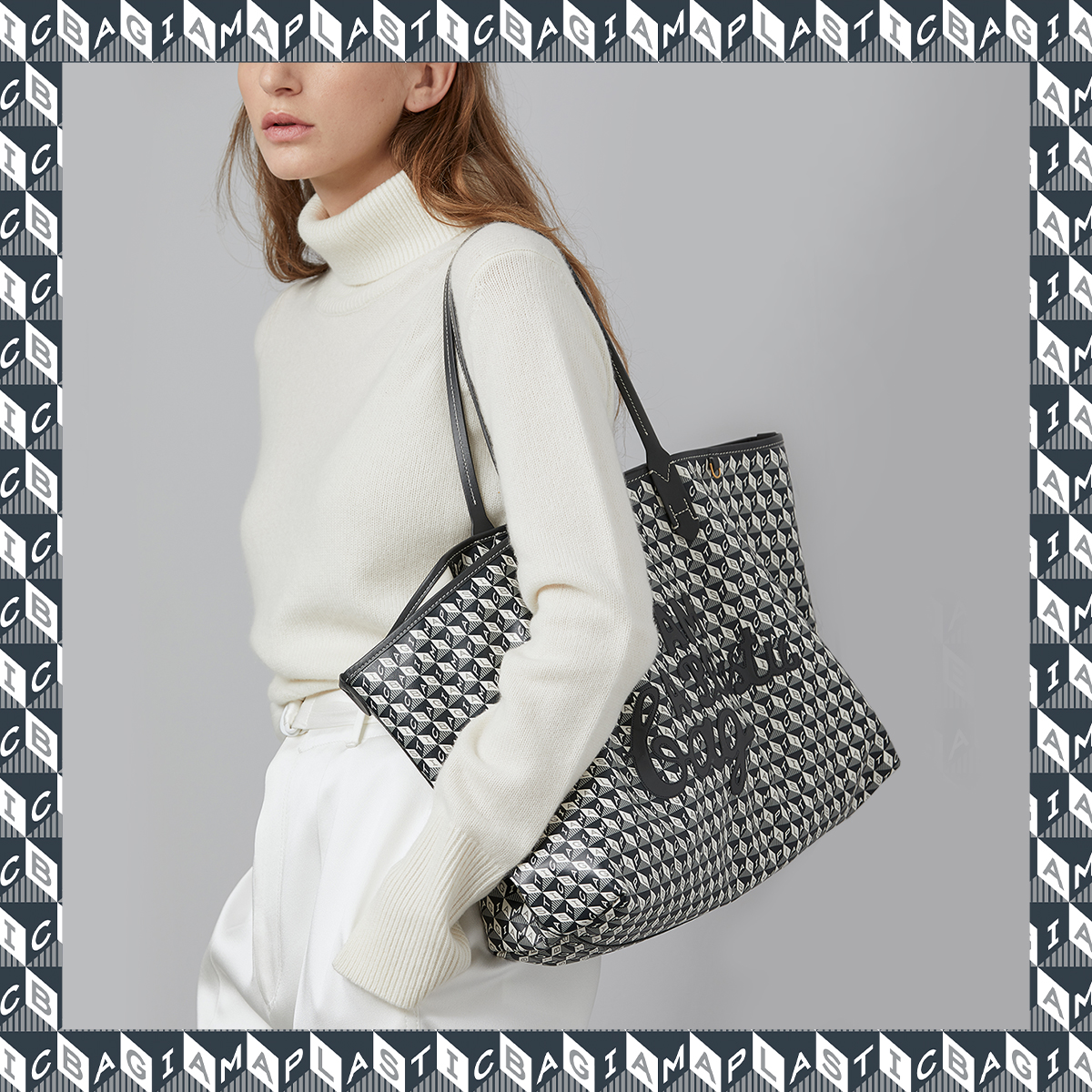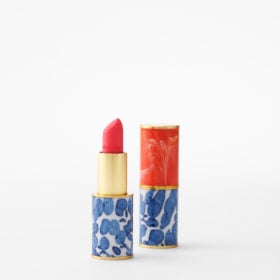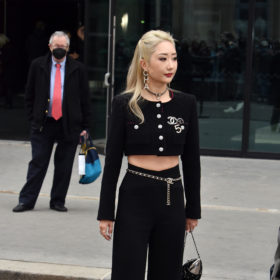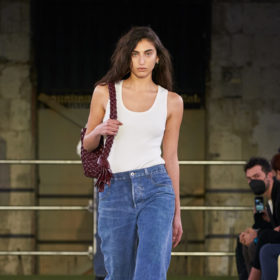
October 19, 2020 at 07:20PM
This past summer, a Gucci Beauty campaign image featuring Ellie Goldstein, a British model with Down syndrome, became the brand’s most liked Instagram post. With 850,000 likes at the time of writing, it outstripped an image of Harry Styles by a factor of two and most other posts by a factor of 10.
“The industry can no longer say the public doesn’t want to see disabled people, because that absolutely proves otherwise,” says Laura Johnson, whose London agency Zebedee reps Goldstein. “The public has spoken.”
Indeed, the general population has been demanding for years that the modelling industry be more reflective of the world we live in, with an insistence on having people of varying ages, races, gender identities, body types and abilities represented in advertisements and editorials and on runways. While for decades the fashion industry favoured a rigid definition of “model” that was historically synonymous with “tall, skinny and white,” that status quo has been challenged by not only consumers but also, now increasingly, the gatekeepers of the industry itself.
Alongside today’s “traditional” modelling agencies, there is a crop of boutique agencies with an “unconventional” approach that welcomes people who authentically represent the diversity we encounter in our everyday lives, and this concept of credibility is key to keeping the entire fashion industry in check moving forward.
ADVERTISEMENT
ADVERTISEMENTKate Spade Autumn/Winter Sale |
“Right now, there’s so much attention being brought to the performativity of politics,” says Vancouver-born Nafisa Kaptownwala, who founded the agency Lorde Inc in 2013 with a mandate of representing models of colour. “Clothing brands that haven’t been paying Bangladeshi factories for their work are simultaneously posting about social justice politics on their Instagram pages. Things are not adding up.”
Given these observations, Kaptownwala’s goals have shifted over time. “Though representation can bring attention to a lot of things, it’s not where the work ends; it’s a starting point.” She highlights the notion of storytelling—and how model casting is a part of larger narratives put forth by brands and the media—as a more imperative focus moving forward.
FASHION spoke to the founders of six similarly minded unconventional modelling agencies around the world to learn more about their beginnings and where they’re headed.
Zebedee, London
Sisters-in-law Laura Johnson and Zoe Proctor were walking on the beach one day in 2017, chatting about the lack of representation of disabled people in fashion and the media. With the former’s background as a social worker working with people with mental health needs and the latter’s role as a performing arts teacher for people with disabilities, the topic was close to both of their hearts. That’s when they had what Johnson calls a light-bulb moment: “If there aren’t any agents representing people with disabilities, then why don’t we?”
They put their plans into motion the very same day and launched their agency—which represents people with visible and non-visible disabilities; people with physical differences such as alopecia, vitiligo or scarring; and trans and non-binary people—six months later. Following Zebedee’s launch, an article was written about it in a magazine for the disabled community, and the agency was hit with a wave of interest.
“We must have had an application a minute for the next couple of weeks,” laughs Johnson. “I think that for a lot of people, it hadn’t even crossed their minds that this was something they could do because culturally it was not commonplace at all.”

While strides have been made in the industry in terms of body positivity and racial diversity, people with disabilities remain woefully under-represented. Disabled people make up between 15 and 20 per cent of society, says Johnson, but their reflection in advertising is as low as 0.06 per cent. In fashion, it’s lower still—between 0.01 and 0.02 per cent, which means that only one in 10,000 people being booked in fashion are disabled.
While Zebedee works with many different brands, bookings remain unpredictable rather than consistent, with most clients reaching out for models for one-off campaigns to suit a representation quota. But Johnson won’t let that faze her. “At the moment, we’ll take tokenism, because inclusion has to start somewhere. If everyone’s scared about being called out as tokenistic, then you have zero bookings. Someone’s always going to start off as being the token, but in time, people will realize the worth and value of the people we represent.”
Slay Model Management, Los Angeles and New York
Released in 2013, Cecilio Asuncion’s documentary What’s the T? explored the lives of five transgender women. The more time Asuncion spent with the trans community, the better he understood the discrimination they faced in the media and the sort of representation they were sorely lacking. From these experiences, he decided to open Slay, an agency for transgender models, and received over 500 applications after an article about the launch appeared in The Advocate.
During the early years of Slay, Asuncion recalls having to play the role of not just agent but also educator—having to “school” casting directors who didn’t know the difference between a drag queen and a trans woman. Though the industry’s acceptance of the trans community has improved in the five years since Slay’s launch, Asuncion says it’s a “tricky space” when you represent trans models, and his exhortation to clients is simple: “Treat them like human beings. Know their damn names. Use the right pronouns. Listen to them—really listen— and apply what you hear.”

While Asuncion says there’s still a lot of work to be done, he is optimistic that models from the trans community will have a brighter future as things continue to change and evolve for the better, particularly with the rise of more unconventional modelling agencies like his own.
ADVERTISEMENT
ADVERTISEMENTSports Direct Free Delivery on All Orders! |
“When I started the agency, people would say ‘You do know that if you expand your agency to include cisgender models, you’ll earn more.’ I thought about it for a second, but then I was like, ‘Until the Fords, the Elites and the IMGs have as many trans models as their cisgender counterparts, I’m not going anywhere.’”
Stranger Agency, Vancouver
As a bridalwear designer, Gaby Bayona constantly struggled with finding a diverse group of women to model her creations, saying that most agencies in Vancouver only “had the trophy Black person and the trophy Asian person.” She decided to take on the casting process herself, putting out calls on social media, and discovered there was a wide range of models in the city who weren’t being repped by traditional agencies “because they didn’t fit the mould.”
And so Stranger was born. The name, says Bayona, “feeds into what the agency stands for—how it’s a bit stranger than your typical modelling agency in that it doesn’t fit the traditional norms. We’ve got models who are five foot three, models who are older, models of different races, tattooed models, pierced models. I don’t have any preconceived notions of what a model should look like.” There’s also a clear emphasis on personality and individuality among Stranger’s roster, which is highlighted in the way the models are presented on the agency’s website. “I like when models are doing their own thing—like running their own business—or have their hands in multiple pots,” explains Bayona.

Though she acknowledges the problem of tokenism in the industry, she believes more visibility is ultimately what’s going to nurture change. “I’m a young female minority business owner, and I’ll see myself being put on a panel because they need an Asian person. I used to feel really weird about that, but as I’ve grown up, I’ve realized that right now the people making these decisions are doing it to tick a box but the people they’re influencing are the next generation. The younger generation is going to grow up seeing representation, and it’s going to be so normal for them that they won’t even question it.”
We Speak Model Management, New York
Former model Briauna Mariah founded her agency so that models wouldn’t have to suffer through the same experiences she had. “I always felt bullied when I was modelling, and it was a very negative experience for me,” she says. “I felt really put down. I was never paid on time. I was never thin enough. One of my agents once told me that a client had said my thighs were ‘too doughy.’ I was the thinnest I had ever been, and I was so unhealthy. I was trying to do it in a healthy way, but I kept seeing the results of calorie restriction and just kept doing that. It was a very toxic way of being and existing in the industry.”
Mariah ultimately quit modelling in 2013—five years after she started—and began to think about launching an agency that would do things differently. Cultivating a “wholesome” air of openness and collaboration at We Speak is important to her, as well as making sure that her models are respected, whether that means clients have been informed of their correct pronouns or been given their most up-to-date measurements to avoid awkward adjustments later on-set.

Currently, We Speak has approximately 100 models on its roster, with Mariah consciously fighting against industry standards with each recruitment. In a step toward creating a lasting impact, she launched an initiative over the summer asking the agency’s clients to pledge to creating real systemic change within their workplaces. Addressing issues of tokenism, systemic racism, sustainability and more, the pledge, developed with
the input of models themselves, is “a call to action” to the people who work with We Speak. “The industry is moving in the right direction,” says Mariah, “but it still has a lot of work to do.”
Ugly Models, London
Ugly Models—“the world’s longest running character model agency”—was ahead of the curve when it launched back in 1969. So far ahead, in fact, that “we were like aliens,” laughs Marc French, who signed on with Ugly as a model over two decades ago and now runs the agency.
Contrary to dictionary definitions of “ugly,” the character models represented by the agency are simply people who are “comfortable in their own skin,” explains French. “They’re happy with the way they look. They don’t want to be changed. They’re individual and unique.” In an industry generally beholden to cookie cutter beauty ideals, it’s a game-changing idea even today; but 50 years ago, it was nothing short of revolutionary.

“For years, the fashion industry was a place where you had to be a certain way or shape, which is awful,” says French. “It’s so lovely now to see that people do appreciate different types of looks. It’s what we’ve been pushing for for years, and now it’s here and everyone’s doing it. It’s brilliant the way I’ve seen the industry change.”
Representing about 1,000 models at any given time, UGLY is one of the largest unconventional modelling agencies in the world and is proud of the spectrum of humanity it showcases, which includes models ranging in age from 18 to over 100, little people, giants, people covered in tattoos and more.
“We had a lady who did a Liberty London campaign on her 100th birthday,” says French. “It was unbelievable—one of my highlights.”
ADVERTISEMENT

ADVERTISEMENT
Anya Hindmarch - I AM A PLASTIC BAGAlaeria, Vancouver
As a former model, Snejina Stoilova knew exactly what kind of agency she wanted to run—or, more precisely, what kind of agency she didn’t want to run. “I knew how harsh the industry was, but I decided that I wanted to make it so I could bring on people to take advantage of the industry in the right way and thrive in it rather than be trampled by it.”
As a “holistic” modelling agency, Alaeria aims to look at the full picture of what a model needs in terms of development and support, providing workshops, tools and resources for the models to feel happy and healthy. Pre-COVID-19, free workshops took place every two to three months, focusing on topics like fitness and mental health, nutrition and skincare. Creating an open, hierarchy-free environment was also a major goal for Stoilova.

“As a model, I never really thought of my agents as people I could talk to if something was going wrong or if I felt uncomfortable or had questions,” she says. “For some reason, nothing’s really explained to you about how the industry works or about money and things like that, so you just have to trust your agent.”
In an effort to ensure that her models feel safe, sup- ported and valued, Stoilova takes steps to foster an open and transparent atmosphere at the company. “I make the models feel like they have somebody they can talk to, somebody they can trust. We’re a resource that will give them all the information they need but also a place that makes them feel welcome and healthy—both mentally and physically.”
The post 6 Unconventional Modelling Agencies on a Quest to Reshape the Industry appeared first on FASHION Magazine.
Read More Fashion News
Author Pahull Bains | Fashion Magazine
Selected by CWC
ADVERTISEMENT
ADVERTISEMENTUp to 30% off Gift Sets |







